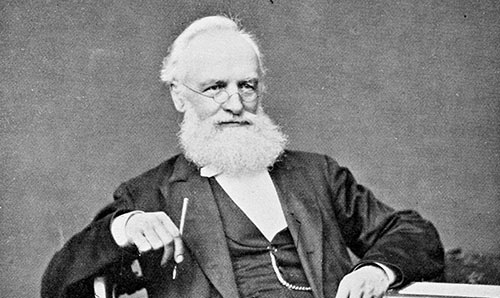
About our Laboratories
Acting as a hub for interdisciplinary research in molecular environmental science, the Williamson Research Laboratories houses a range of research laboratories and equipment for investigating our environment and the effect of human behaviour upon environmental systems.

More than a decade of world class research led to a successful bid to the government’s Joint Infrastructure Fund, via the NERC, and the award of approximately £3.3 million to establish the Williamson Research Laboratories, which opened in October 2001.
Our research is essential for an understanding of our environment and the effect of human behaviour upon environmental systems. It involves not only geoscientists but also chemists and biologists, and actively supports collaboration with the wider community.
We are based in the Department of Earth and Environmental Sciences, in the Williamson Building.
Professor Williamson
The laboratories are named after Professor William Crawford Williamson FRS, the eminent Victorian scientist who was appointed as the first Professor of Natural History (Geology, Zoology and Botany) at Manchester in 1851. Williamson was one of the great Victorian naturalists who knew and actively corresponded with Charles Darwin, Louis Agassiz, T.H. Huxley and other great scientists of the day. He also knew John Dalton, and famously tended the great man during his final days, feeding him broth and other liquid sustenance.
Williamson trained as a doctor and practised as an eye surgeon as well as pursuing his studies in the natural sciences. He was instrumental in the development of the study of rocks in thin section, and did pioneering work in palaeobotany. Now, more than 150 years after one man bridged the great natural science disciplines, we again bring together the geological and biological sciences in interdisciplinary research.

Research
Our cross-disciplinary research programmes have been developed in areas including geological disposal, remediation, environment & health, climate change and nanotechnology.

Facilities
Our research facilities rival those of leading Earth, atmospheric and environmental research institutions worldwide.
